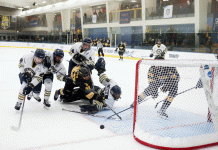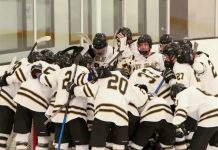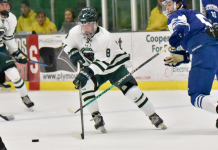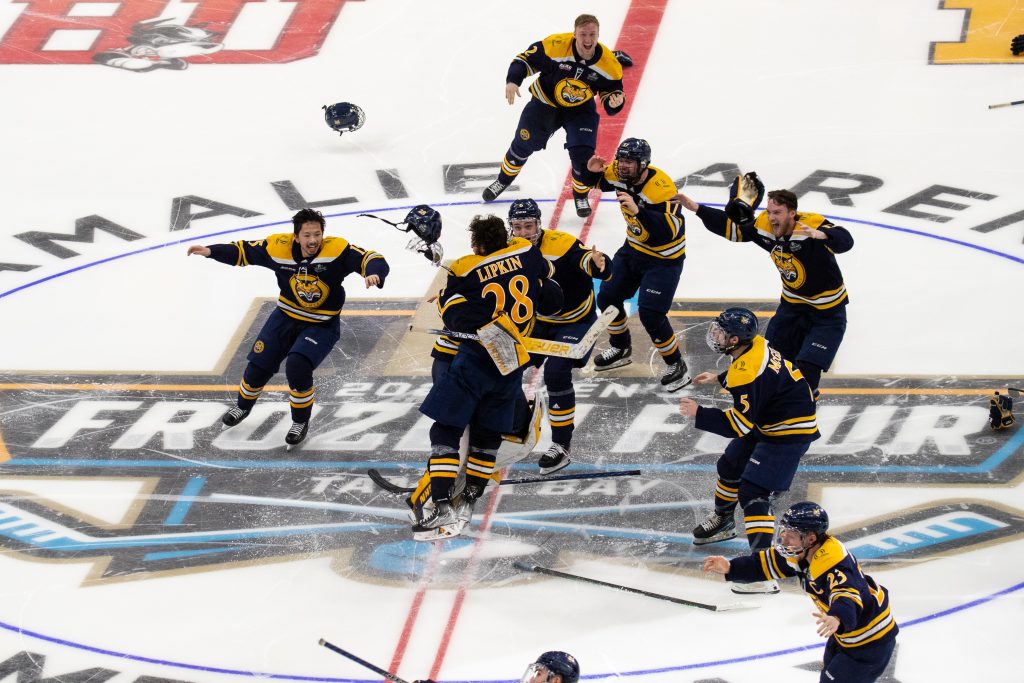
Last year was a perfect capstone for the ECAC Hockey’s previous era.
The league, once taunted, for its inability to win a national championship since 1989, dominated the national headlines and tied the Big Ten for most teams sent to the NCAA tournament. Four teams in total qualified, of which two won their first-round matchups, and one advanced to the Frozen Four. Of those four teams, every corner of the league’s history – the past, the near-recent, and the present and future – told different stories, the most forward of which was Quinnipiac’s 3-2 win over Minnesota after a stretch pass play scored a goal within the first 10 seconds of a sudden death overtime.
It made the league impossible to ignore. Cornell was considered one of the last two at-large teams in the tournament, but the Big Red eliminated top-seeded Denver in the East Regional and ended the Pioneers’ national championship reign before losing a one-goal game to Boston University.
Harvard, the defending Whitelaw Cup champions, rode its best record since the 2016-2017 season to a sixth NCAA tournament berth since 2015.
Colgate, the dark horse nobody saw coming, won its first conference championship in over 30 years and gave head coach Don Vaughan a long-awaited ring before he walked off into the sunset.
And Quinnipiac, the megalith giant that nearly posted a perfect regular season in conference play, won its first national championship for a coach who never stopped believing in the program he built from its humble, Division II roots.
“It’s a life-changing event for sure,” said Bobcats coach Rand Pecknold of life after the championship. “In terms of notoriety, in 7-11s or airports, once in a blue moon, I’ll get recognized because of college hockey. There have been some crazy places where people just come up to me. Certainly, I had a lot of requests to bring the trophy and to speak at different events. I think I said yes to everything, whether it was as big as throwing a pitch at a Red Sox game or doing the New York Stock Exchange or some of the really small events that I did. It’s all about promoting Quinnipiac, and people love the trophy.
“They all wanted to see the trophy.”
ECAC was everywhere, and the gifts were the perfect retirement presents for Vaughan, who won just under 500 games coaching at Colgate and nowhere else, and for commissioner Steve Hagwell, who championed the league’s breakaway from the ECAC organization as the first and only commissioner.
The era walked off into its sunset as triumphantly as possible, but the ending of one day triggered the start of a new day where ECAC is now living as one of the best conferences in college hockey with new faces and new champions ready to carry its torch.
“The league is strong on the ice,” said new commissioner Doug Christiansen during the league’s media day. “It’s my job to help it grow off the ice – growing the brand, generating new revenue, and at the same time making sure that I’m active and out, trying to be forward thinking so that we can move our league forward as the NCAA has with all the different changes.”
The modern era in college hockey isn’t designed for leagues, programs, staffs, or even individuals to celebrate championships for very long, and the ability to capitalize on any forward momentum is crucial at a time when players are increasingly dictating where and how they want to play. Even by itself, the transfer portal forever changed how players navigate their careers, but combining the freedom of movement with name, image, and likeness – the ever-present NIL abbreviation – makes it difficult for any league to rest on its laurels, let alone one where the end of COVID-era impacts took their toll against six programs that couldn’t necessarily jump all over the same luxuries.
“A lot of things have been altered,” said Cornell coach Mike Schafer. “I don’t think that we’re back to normal [roster balance since COVID], but if you look across the country, how many schools have grad students and are out there recruiting? We can’t do that. You’re bringing in a young guy that takes a year or two to transition, which is part of normal college hockey, but a lot of schools can portal themselves out of mistakes and bring guys that are grad students. That luxury that a lot of schools have had over the Ivy League schools, especially, is about to end, and it’s another year where we’re going to be doing that. You’re not going to have that instant senior class that a lot of schools have had.”
“We do have some depth in that they’re also not all grad transfers,” Clarkson coach Casey Jones added. “We’ve added a couple of juniors in there from the transfer portal, but we have a freshman class of six, which has been pretty consistent for us. We tried to get that six-seven [number of recruits], and we didn’t really switch out of that during the COVID years. If we were able to add three grad students to put our classes at [the larger numbers], we’ve added some players underneath to balance the classes off. We got fortunate in that regard, but we did add some mature players and some older players that should give us some stability up front and give us some depth.”
Navigating the murky waters is a big part of why ECAC is going to change in the future, but it’s unlikely that this year is going to unbalance much of what teams offered in the past. Last year’s top half of the conference didn’t change from the 2022 postseason, and the only real switch was when Clarkson fell out of the top-four. It was replaced by St. Lawrence, which used a white hot second half to move into fourth, but the year begins with many of the same questions that dotted last year’s preseason conversation:
— Can the other Ivy League schools navigate their way towards the top of the conference after finishing last year as the bottom four teams?
— Do the Capital District teams at Rensselaer and Union have the mojo to catch the top tier?
— Will anyone stop Cornell from challenging for that top spot, and can Harvard stay in the lofty position created by a resurgent brand?
— Is this finally the year Quinnipiac tumbles out of the top spot?
Sometimes it’s really that simple, even in a year when the Bobcats are defending national champions. The egg hasn’t been cracked, and it likely won’t change until someone upends the apple cart with more than just a single move up or down the standings. It has to be more than just a postseason series win.
The stability within ECAC is real, but the last era is over, and the new ECAC hasn’t even gotten started.
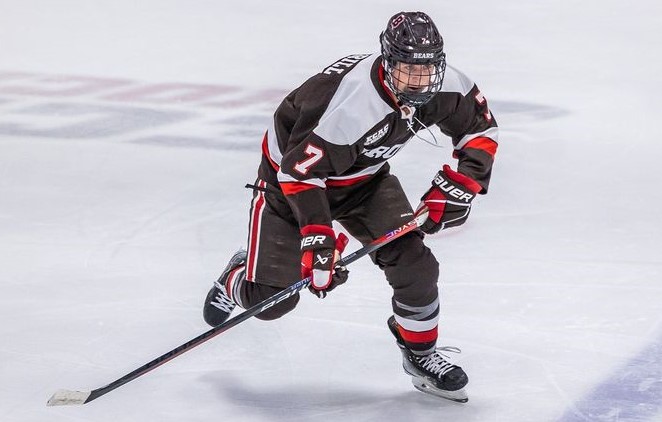
BROWN
HEAD COACH: Brendan Whittet, entering his 15th season at Brown
LAST SEASON: 9-18-3 overall (5-14-3, 20 points, 11th in ECAC)
KEY RETURNING PLAYERS: F Ryan Bottrill (So., 6g-15a-21pts); F Jordan Tonelli (Sr., 7g-10a-17pts); D Brett Bliss (Jr., 6g-7a-13pts)
KEY LOSSES: D Luke Krys (2g-14a-16pts) ; D James Crossman (9g-3a-12pts); F Cole Quisenberry (5g-7a-12pts); Bradley Cocca (4g-8a-12pts); G Mathieu Caron (8-12-3; 2.49 GAA; .921 SV%)
KEY ADDITIONS: F Mike Cataldo (Bonnyville Pontiacs, AJHL); G Stephen Chen (Mercer Chiefs, AAA); G Tyler Shea (Tr., Michigan, Big Ten); F Ryan St. Louis (Tr., Northeastern, Hockey East); G Lawton Zacher (Minot Minotauros, NAHL)
2023-24 PREDICTION: An injury to goalie Mathieu Caron couldn’t have happened at a worse time for Brown last year. The Bears were in eighth place and on the verge of a massive breakout after beating Harvard at home, and holding wins over Merrimack, Union and RPI at the start of January meant they were pistol hot after beating the Crimson. Home ice was a real possibility, and the end of the season felt manageable with the return trip to RPI and Union preceding the long trip to Princeton first before playing Quinnipiac.
The sports gods didn’t apparently like that idea, and felling Caron touched off a tailspin where Brown earned three points over the year’s final eight games. The team tumbled, and in the new era where the first round of the postseason triggered a one-game playoff, the bus was sent as far as humanly possible for a 5-1 loss to Clarkson.
All of that felt like bad luck, and it erased the fact that Bruno had a real shot at hosting that playoff game. It makes it hard to ignore the Bears as a possible factor this year, and head coach Brendan Whittet assembled a roster that recruited to its holes and gaps. Caron, for example, transferred out, as did Luke Krys and Samuli Niinisari, but a number of goalies and defensemen entered the program to compete for slots. Tyler Shea transferred into Brown from Michigan, and the arrival of Ryan St. Louis from Northeastern gives Brown a hopeful up-front replacement for the losses of Nathan Plessis and Cole Quisenberry.
Having goal scorers should keep Brown from losing some early games while figuring out the back end, but not having the top four defensemen from last season or one of the best goalies arguably in the country is a work-in-progress. Luckily, the early game against Yale is a staple for Ivy League teams figuring out the beginning, and a non-conference schedule that includes Holy Cross, LIU and two games against Stonehill should anchor the first half of the season.
If Brown can tread water through those moments, a second half run isn’t out of the question. It’s just a matter of finding the right pieces for that back end.
PREDICTED FINISH: 12th
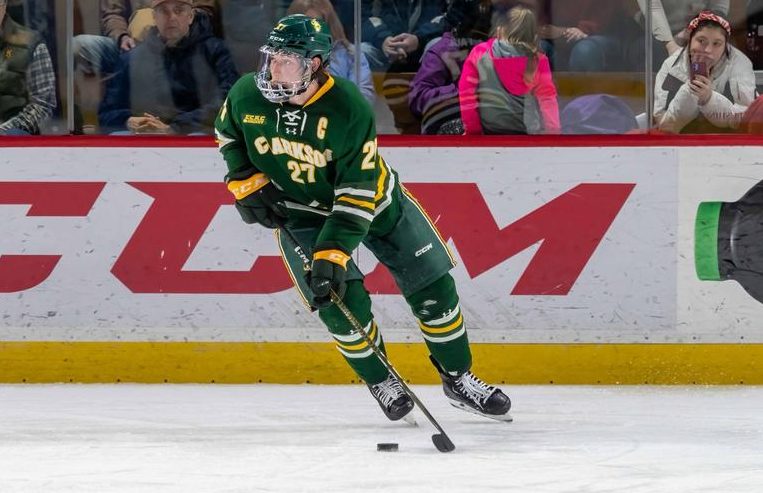
CLARKSON
HEAD COACH: Casey Jones, entering his 13th season at Clarkson
LAST SEASON: 16-17-4 overall (9-10-3, 31 points, sixth in ECAC)
KEY RETURNING PLAYERS: F Ayrton Martino (Jr., 9g-29a-38pts); F Mathieu Gosselin (Sr., 14g-19a-33pts); D Noah Beck (Sr., 6g-17a-23pts); G Ethan Haider (16-16-3, 2.51 GAA, .906 SV%)
KEY LOSSES: F Alex Campbell (14g-12a-26pts); F Jacob Schmidt-Svejstrup (9g-13a-22pts); F Anthony Callin (11g-8a-19pts)
KEY ADDITIONS: G Emmett Croteau (Waterloo Blackhawks, USHL); F Daimon Gardner (Tri City Storm, USHL); D Jack Judson (Tr., Arizona State, D-1 Independent); F Oliver Moberg (Dubuque Fighting Saints, USHL); G Austin Roden (Tr., Providence, Hockey East)
2023-24 PREDICTION: Clarkson opened last season as one of ECAC’s odds-on favorites to win the league. An experienced roster returned enough firepower from championship-caliber teams to make a run at the national tournament, and the burning embers from postseason cancellations over the COVID era left the program with a dangled carrot that hadn’t yet been achieved.
The Golden Knights just never really found their footing, though, and they never truly recovered after starting the season with four straight losses to UNH, Merrimack and Providence, and Mercyhurst. A split against Lake Superior all but ended the mathematical possibility of an at-large bid, and while five straight wins in November helped the team find footing, it also lost too many points to Princeton, Brown, Yale, and St. Lawrence. Plagued by inconsistency, Clarkson entered the postseason without a first-round bye for the first time since 2017, and a second-round trip to Cornell ended the season in straight sets with a pair of losses.
That doesn’t mean the Golden Knights are on the way down, but there are some residual questions worth asking. The preseason coaches poll ranged anywhere from a first-place vote to a fourth-place finish, and the changeover at Colgate left enough non-believers to allow Clarkson to fill the void left by St. Lawrence’s expected drop.
Much of the firepower is still there, but Clarkson needs to develop its trademark consistency in the early non-conference games. Home games against Penn State and Vermont will help, and late October visits from Lake Superior State and Michigan Tech flank a road trip to Merrimack. A holiday trip to Lake Placid for a holiday tournament against Arizona State, Cornell and UMass should add to the fun, and a January swing against Atlantic Hockey should sharpen the iron a bit before the second half kicks into gear.
Clarkson could be in great shape if everything feeds itself in those early months, but another early season stumble could make that first half feel like an up-and-down, hilly climb. It would be great if the road to a bye didn’t hinge on the season-ending road trip to Quinnipiac and Princeton when the first game is against the Bobcats and the second game is the season’s longest trip.
PREDICTED FINISH: Third
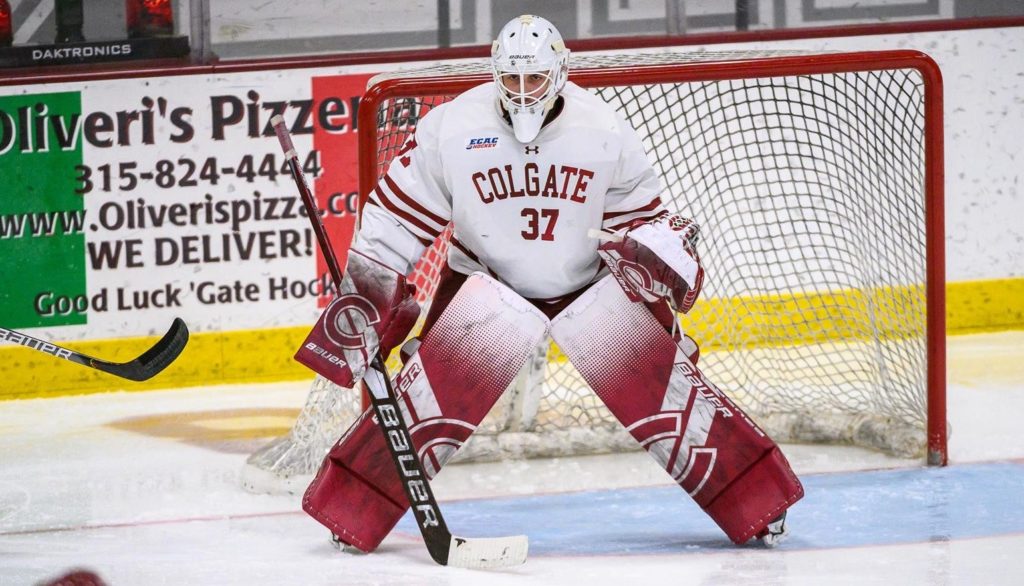
COLGATE
HEAD COACH: Mike Harder, entering his first year at Colgate
LAST SEASON: 19-16-5 overall (11-8-3, 36 points, fifth in ECAC)
KEY RETURNING PLAYERS: D Nick Anderson (3g-26a-29pts); F Ross Mitton (9g-18a-27pts); F Alex DiPaolo (11g-15a-26pts); F Ethan Manderville (9g-18a-27pts); G Carter Gylander (19-5-5, 2.46 GAA, .914 SV%)
KEY LOSSES: F Alex Young (21g-18a-39pts); F Matt Verboon (16g-19a-35pts); F Colton Young (11g-17a-28pts)
KEY ADDITIONS: F Niko Rexine (Muskegon Lumberjacks, USHL); D Dom Foglia (Philadelphia Rebels, NAHL); F Ryan Sullivan (Camrose Kodiaks, AJHL); F Jake Schneider (Prince George Spruce Kings, BCHL)
2023-24 PREDICTION: Last year’s Colgate team wasn’t the best team in the league, but winning the 2023 conference championship tournament showcased the very best of why and how the Raiders set the pace for the rest of the league after Quinnipiac ran away with the regular season crown. The team that started hot, slowed down, then finished hot in 2022 kept true to its nature, but a slow start turned into a hot middle of the season. The Raiders still hit their lull, but they caught lightning in a bottle at the right time and found ways to tread water with the right matchups at the right times.
They earned extra points in shootout wins over Cornell, Clarkson and Brown, which in turn allowed Colgate to host 12th place Dartmouth in the first round. A win sent them to St. Lawrence to play a team they swept during the regular season, and even the Quinnipiac matchup in the semifinal wasn’t daunting for a team that was responsible for one of the two losses against the Bobcats in the season.
It was a wonderful run, and it ended with Don Vaughan’s first championship over a 30-plus year career at the university. Colgate went to its first national tournament in nine years, and not even the blowout against Michigan diminished what the team accomplished in what became a swan song.
Now comes the next part. Mike Harder was the logical selection and the right choice to succeed Vaughan after spending the last 10 years as an assistant coach, and the former Raider is a legend in Hamilton, New York. He’s the right fit for building the program to its next stage, but the interim time period might have its growing pains.
He’ll have to find a way to replace 50 goals, and the relatively-small recruiting class means much of the build is going to happen within the team. Carter Gylander returning is a big help in the back, but the Raiders still allowed 109 goals last year, which was fourth most in the conference.
Colgate shouldn’t drop too far down the standings, but asking the Raiders to repeat as conference champions in a league with the top-end, top-flight teams is a tall order. As always, the possibility of a deep run is there, but the team just might not set the pace like it did over the last two seasons.
PREDICTED FINISH: Seventh
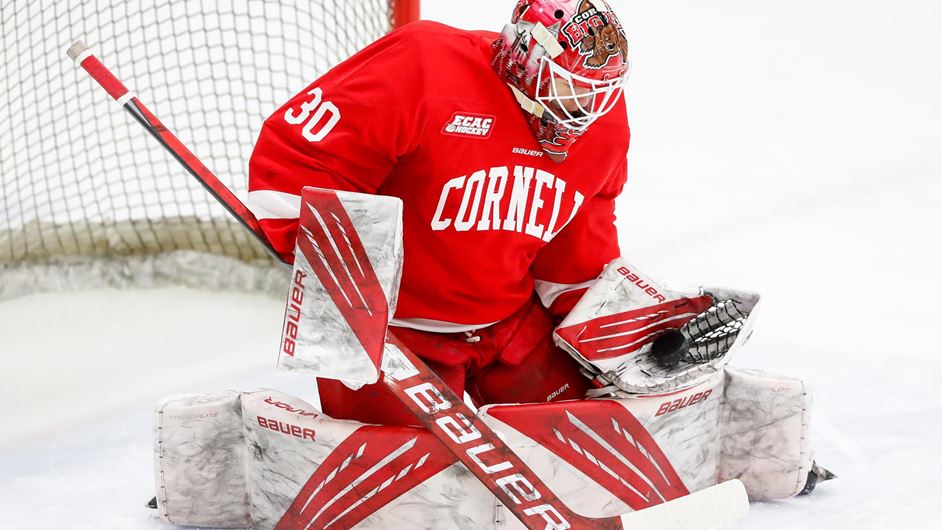
CORNELL
HEAD COACH: Mike Schafer, entering his 29th season at Cornell
LAST SEASON: 21-11-2 overall (15-6-1, 47 points, third in ECAC)
KEY RETURNING PLAYERS: F Gabriel Seger (Sr., 7g-23a-30pts); F Dalton Bancroft (So., 9g-12a-21pts); F Nick DeSantis (So, 9g-11a-20pts); G Ian Shane (Jr., 20-10-1, 1.72 GAA, .916 SV%)
KEY LOSSES: F Ben Berard (11g-17a-28pts); D Sam Malinski (8g-18a-26pts); F Max Andreev (8g-16a-22pts)
KEY ADDITIONS: F Luke Devlin (West Kelowna Warriors, BCHL); D George Fegaras (Muskegon Lumberjacks, USHL); D Hoyt Stanley (Victoria Grizzlies, BCHL); F Ryan Walsh (Cedar Rapids RoughRiders, USHL)
2023-24 PREDICTION: Death, taxes, and Cornell turning over its roster from one year to another with enough talent to make a run at the top of the league.
The Big Red entered this year needing to replace three 20-point scorers without the benefit of the transfer portal, so head coach Mike Schafer did what he does best: recruited talented freshmen who could rebuild the team’s identity. Four of those incoming first years – Luke Devlin, George Fegaras, and Hoyt Stanley – are NHL draft picks, and the large bulk bring the physical tools needed to augment a style that always seems to work.
The returning production makes it easy to slot the new players into the lineup, and Ian Shane’s presence all but guarantees Cleary Cup potential behind an all-everything goalie. It’s about what everyone’s come to expect from Cornell, which has a system that works and a head coach that knows how to execute it.
It’s the one program that’s never been fazed by the Ivy League’s overall restrictions, and the runway won’t really change when the Big Red hit the ice with their Ancient Eight brethren in late October. Minnesota-Duluth’s trip to Lynah Rink is headlining material for college hockey in general, but the next two weeks are against Ivy opponents. That should give enough time for takeoff before the November trip to Quinnipiac and the annual Red Hot Hockey matchup at Madison Square Garden (this year against Boston University).
It’s hard to expect anything less than another solid year out of Cornell, and it really doesn’t require much analysis. Unless something weird happens, the only question is if Quinnipiac regressed enough for the Big Red to catch the front unless, that is, Clarkson and Harvard have the engine to overcome their own perceived mismatches.
PREDICTED FINISH: Second
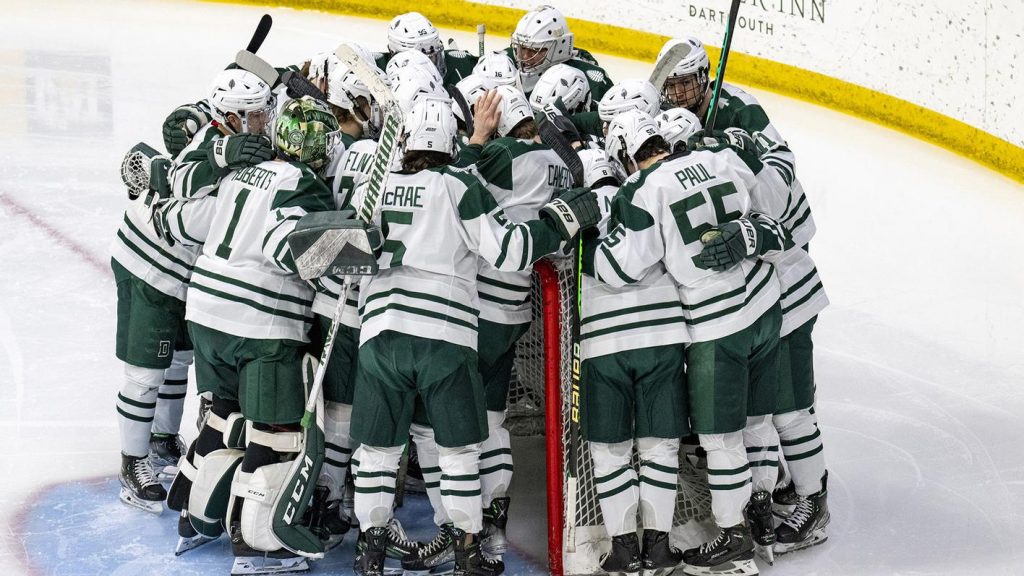
DARTMOUTH
HEAD COACH: Reid Cashman, entering his third season at Dartmouth
LAST SEASON: 5-24-1 overall (4-17-1, 16 points, 12th in ECAC)
KEY RETURNING PLAYERS: F Braiden Dorfman (Jr., 7g-10a-17pts); F Luke Haymes (So., 11g-5a-16pts); F Sean Chisholm (Jr., 7g-7a-14pts); G Cooper Black (So., 5-23-1, 3.07 GAA, .899 SV%)
KEY LOSSES: D Tanner Palocsik (4g-18a-22pts); F Matt Hubbarde (5g-11a-16pts)
KEY ADDITIONS: D Eric Charpentier (New Jersey Jr. Titans, NAHL); G Roan Clarke (Vernon Vipers, BCHL); Oskari Vuorio (Jokerit U-20, Finland)
2023-24 PREDICTION: There were times last year when Dartmouth felt like a spunky upstart ready to take its next step, but earning the occasional win and playing a hard game wasn’t enough to prevent the Big Green from occupying the league’s bottom slot. Like some of the other Ivy League schools, it was all part of a necessary reboot, but anyone who watched Dartmouth couldn’t help but feel like the team left some meat on the bone.
There is something still brewing in New Hampshire, though, and there isn’t much turnover to a roster that’s spent the last two years rebuilding the infrastructure under head coach Reid Cashman. The very real effort transitioned a program out of the COVID era by rewiring its entire genetic code, and the parity and wide-open nature of the league’s bottom half means that a natural progression could easily have the Big Green battling for home ice like what Yale did last year.
It’s likely going to happen after a rocky start that includes games against Harvard, Quinnipiac, and Cornell, along with a nonconference game against UConn, a team that could be Hockey East’s dark horse. It’s a far cry from the second half, which opens with a trip to Yale and Brown and ends with a majority of home games against middle-tier or lower-tier teams from a year ago, including a return trip from the Bears and Bulldogs to end the season.
Assuming Dartmouth takes a step forward, that means the Big Green could be rolling into the postseason, and any combination of positive vibes from the first month would accelerate the process. Three teams finished tied for seventh on points last year. If anything breaks, the hole that opens is enough for this team to finally start sliding upwards into those spots.
PREDICTED FINISH: Ninth
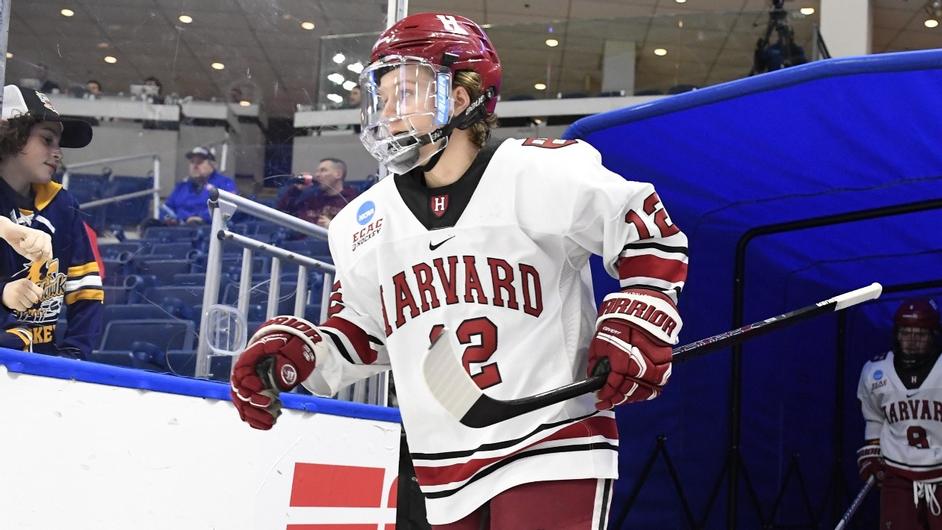
HARVARD
HEAD COACH: Ted Donato, entering his 19th season at Harvard
LAST SEASON: 24-8-2 overall (18-4-0, 49 points, second in ECAC)
KEY RETURNING PLAYERS: F Joe Miller (So., 13g-15a-28pts); D Ian Moore (Jr., 1g-18a-19pts); F Marek Hejduk (So., 6g-7a-13pts); G Derek Mullahy (5-0-0, 1.70 GAA, .929 SV%)
KEY LOSSES: F Sean Farrell (20g-33a-53pts); F Alex Laferriere (21g-21a-42pts); F Matthew Coronato (20g-16a-36pts); F Henry Thrun (7g-24a-31pts); F John Farinacci (5g-15a-20pts); D Ryan Siedem (1g-16a-17pts); G Mitchell Gibson (18-7-2, 2.25 GAA, .919 SV%)
KEY ADDITIONS: F Michael Callow (Muskegon Lumberjacks, USHL); D David Hejduk (Wenatchee Wild, BCHL); F Ben McDonald (West Kelowna Warriors, BCHL); D Matthew Morden (Muskegon Lumberjacks, USHL)
2023-24 PREDICTION: Harvard enters this season walking a balance beam between transitioning eras and not dropping too far down the standings. Players that helped the Crimson avoid missing any beats from the COVID era are gone, and success is now falling to players who hypothetically step easily into the roles vacated by those who left.
It’s nearly impossible to predict how all of this falls. Losing virtually all of the top line production from last year is a major negative, but Joe Miller’s logical development slots him into that next phase of the program’s future. Marek Hejduk had 13 points as a first year, but he’ll receive way more opportunities and shifts with Alex Laferriere, Matthew Coronato, and Sean Farrell all signed to NHL franchises.
It would’ve been nice to get more years out of guys with eligibility, but it’s obvious why their NHL teams made sure they didn’t return to college. That’s part of what it is at Harvard, especially over the last couple of years, and it’s why the current crop shouldn’t let the team drop too far.
That said, replacing players in a league where two very talented teams returned a good amount of firepower is going to make it hard to compete for the Cleary Cup. It won’t help that Harvard only plays three of its first dozen games at home, and one of those is against Quinnipiac, which is the defending national champion. It does mean that the Crimson should push forward into the second half of the year as things gel, but it might not translate to as good of a regular season run.
More likely to Harvard is a strong trophy season, especially since the Beanpot means the Quinnipiac road game is the only game the team plays over that weekend in February. A manageable last month, coupled with home games against the North Country and a lone trip to the Capital District, all but means the Crimson could do something like what Colgate did last year – just maybe without the second half cold stretch.
PREDICTED FINISH: Fourth
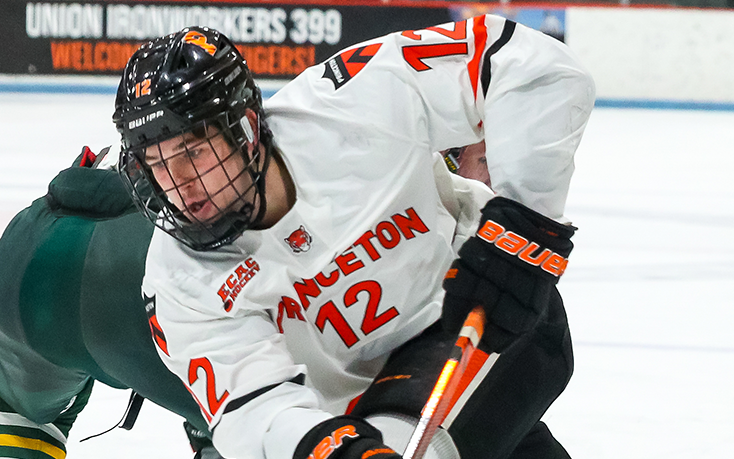
PRINCETON
HEAD COACH: Ron Fogarty, entering his 10th season at Princeton
LAST SEASON: 13-19-0 overall (8-14-0, 26 points, T-7th in ECAC)
KEY RETURNING PLAYERS: F Ian Murphy (Sr., 15g-15a-30pts); F Brendan Gorman (So., 5g-15a-20pts); F Jack Cronin (Jr., 12g-6a-18pts); D Noah de la Durantaye (Jr., 4g-13a-17pts); G Ethan Pearson (11-9-0, 2.71 GAA, .903 SV%)
KEY LOSSES: F Liam Gorman (12g-10a-22pts); D Pito Walton (7g-14a-21pts)
KEY ADDITIONS: F Carson Buydens (Lincoln Stars, USHL); D Ian Devlin (Coquitlam Express, BCHL); G Arthur Smith (Lone Star Brahamas, NAHL)
2023-24 PREDICTION: The first glance of ECAC standings made it look like Princeton started the year at the top of the table before backsliding out of home ice advantage in the first round, but the Tigers had played three more games than Colgate and Cornell when they were tied for third at the start of the 2023 calendar year.
Maybe it made the season look like a mirage in a way, but it bears mentioning because Princeton was really a consistent team last year. The Tigers won as many games as Union and RPI, and they came within a puck bounce or two of threatening Clarkson for fifth despite having a roster that was unquestionably finishing its transition out of the ECAC championship era.
The 2018 team that won a banner didn’t finish higher than seventh, which is where the Tigers ultimately slotted last year, but even that team was within a bounce or two of threatening for a top-four spot. Given the way ECAC is going through a shuffle, there’s a good chance, then, that Princeton breaks out of the pack and jumps up towards Harvard for fourth.
The schedule is manageable enough because playing as Quinnipiac’s travel partner means the Bobcats are a home-and-home across a January weekend. The Ivy League’s late start means Harvard opens the year, and the way the Beanpot forces schedule shuffling in February further means the Tigers play a one-off weekend against the Crimson around New Year’s Eve. There really aren’t too many pitfalls, so a team that further develops its core has an opportunity to balance its way forward.
And what of that team? Well, yes, it did lose two of its leading scorers, but adding goaltenders to a stable headlined by one of the league’s best-kept secrets is a huge win. There are also talented bodies coming into the program from the junior level, and the large bulk of production returns. Consider me buying Princeton stock this year.
PREDICTED FINISH: Fifth
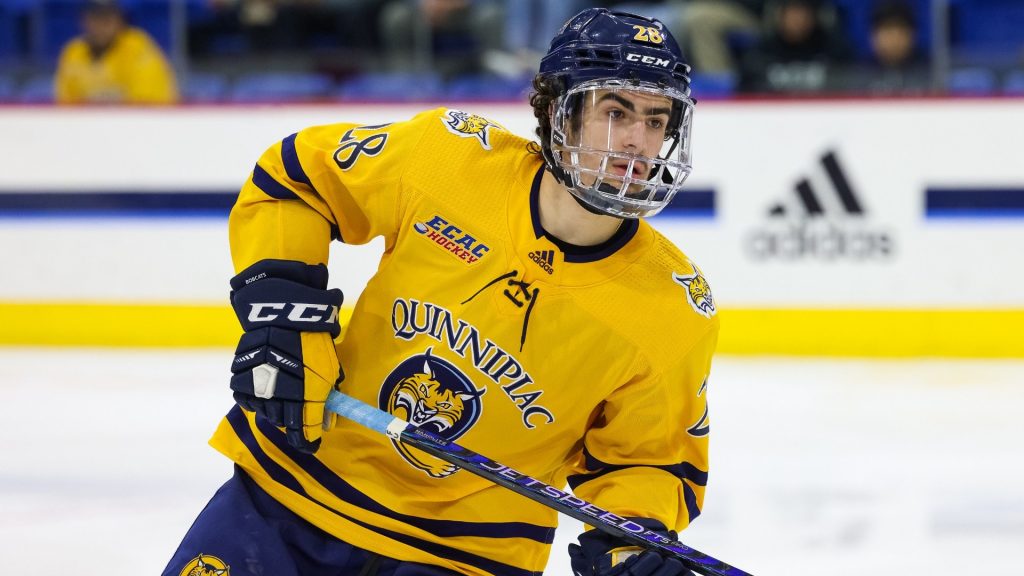
QUINNIPIAC
HEAD COACH: Rand Pecknold, entering his 30th season at Quinnipiac
LAST SEASON: 34-4-3 overall (20-2-0, 60 points, first in ECAC)
KEY RETURNING PLAYERS: F Collin Graf (Jr., 21g-38a-59pts); F Sam Lipkin (So., 14g-29a-43pts); F Jacob Quillan (Jr., 19g-19a-38pts)
KEY LOSSES: F Ethan de Jong (19g-21a-40pts); D Zach Metsa (9g-28a-37pts); F Skyler Brind’Amour (14g-18a-32pts); F TJ Friedmann (11g-11a-22pts); F Michael Lombardi (10g-12a-22pts); D Jacob Nordqvist (0g-11a-11pts); G Yaniv Perets (34-4-3, 1.49 GAA, .931 SV%)
KEY ADDITIONS: F Mason Marcellus (Lincoln Stars, USHL); G Vinny Duplessis (Tr., Boston University, Hockey East); D Cooper Moore (Tr., North Dakota, NCHC); D Davis Pennington (Tr., Omaha, NCHC); F Travis Treloar (Tr., Ohio State, Big Ten)
2023-24 PREDICTION: I somehow predicted Quinnipiac to finish fourth last season, and the Bobcats rewarded me by borderline running the table in conference play before advancing to the Frozen Four and winning their first national championship in program history. I don’t know if Rand Pecknold reads this space – or even cares what’s written about him and his team – but I think I need to wear that one with a big, fat cone on my head.
Maybe this actually is the year that the Bobcats go backwards, but Quinnipiac went 20-2 in ECAC play last year and won its national title after starting the year with a roster that lost one of its starting goaltenders and had to turnover a roster with a dozen-plus departures, including three top scorers.
The story itself won’t change for this year after nine to 10 key contributors from last year’s team left the program. Most graduated, but the replacements all carry the type of experience necessary to compete and win. Goalie Yaniv Perets, the backstop of the championship program, is gone, but he’s replaced by Vinny Duplessis, a transfer from BU that played over 1,000 minutes over a three-year span.
Skyler Brind’Amour, T.J. Friedmann, Joey Cipollone, and Michael Lombardi are gone from the forwards. Zach Metsa and Jacob Nordqvist are off the defensive line. Ethan De Jong graduated. They’re rightfully replaced either by in-house bodies or transfers like Cooper Moore, a former fifth round pick of Detroit who returned home to Connecticut after starting his college career at North Dakota, and Travis Treloar, a two-time 20-point scorer who was on the Ohio State team that lost to Quinnipiac in the NCAA tournament.
That’s not to say there aren’t questions, but a non-conference schedule featuring Boston College, American International, New Hampshire and Maine should provide a good understanding of this team prior to its November matchup with Harvard. Three games against Dartmouth, Brown, and Yale should help lead directly into the Cornell matchup, which is at home, and we’ll know if the matchup with Boston University before Thanksgiving is a preview of the national championship or just a really good way to get ready for turkey dinner.
I made a mistake last year by thinking Quinnipiac would fall behind Cornell, Harvard, and Clarkson. I won’t make that mistake this year. The champs are the champs until someone knocks them out of the postseason.
PREDICTED FINISH: First
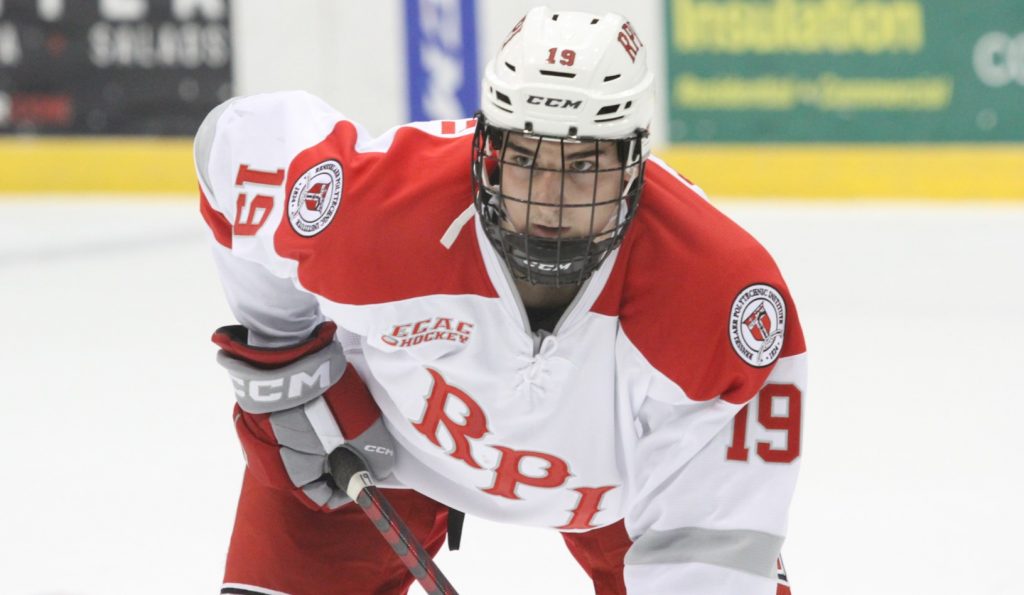
RENSSEALER
HEAD COACH: Dave Smith, entering his seventh season at RPI
LAST SEASON: 14-20-1 overall (9-13-0, 26 points, T-7th in ECAC)
KEY RETURNING PLAYERS: F Jakob Lee (Sr., 10g-12a-22pts); F Sutter Muzzatti (So., 7g-15a-22pts); F Austin Heidemann (Sr., 10g-10a-20pts); G Jack Watson (13-15-1, 3.08 GAA, .895 SV%)
KEY LOSSES: F Ryan Mahshie (15g-7a-22pts); F TJ Walsh (7g-10a-17pts); F Jake Gagnon (6g-10a-16pts)
KEY ADDITIONS: F Nathan Sullivan (Camrose Kodiaks, AJHL); F Ryan Brushett (Tr., UMass Lowell, Hockey East); D CJ Regula (Tr., Ohio State, Big Ten)
2023-24 PREDICTION: Last year was supposed to be the year that RPI dropped off and fell off the map after losing far too much production from the 2021-2022 season. The Engineers had about a dozen different spots to slot new players into roles, and the general parity and returning experience around them in the standings meant they weren’t supposed to slide into the expected pack.
What a difference a year makes.
It might still take the team one more year to fully move forward, but head coach Dave Smith matured his roster into a seventh-place finish last year before Yale induced a first round exit in the new single-game elimination format. It’s easy to play “What If?” and ask if the Engineers would have won the series with the old, best-of-three format, but the team moved into the right hole at a time when it easily could have dodge, dived, ducked, dipped, and dodged its way into a first-round road game.
What does all of this mean for this year? It’s hard to tell. The season’s start is a brutal run through New England that includes two games at Maine and games at Boston College and Providence, and the two later games against Northeastern precede Quinnipiac’s visit to Albany. Minnesota State should be better than the Mavericks’ predicted finish in the CCHA, and the second half of the year features the annual Mayor’s Cup nonconference game against Union along with the Princeton-Quinnipiac and Colgate-Cornell road trips.
I would hate to be the team that plays RPI in the playoffs, and RPI is absolutely going to run up the league before it’s too late…don’t hate me for this, but it’s more about what happens around RPI and not an indictment of the actual hockey team.
PREDICTED FINISH: Ninth
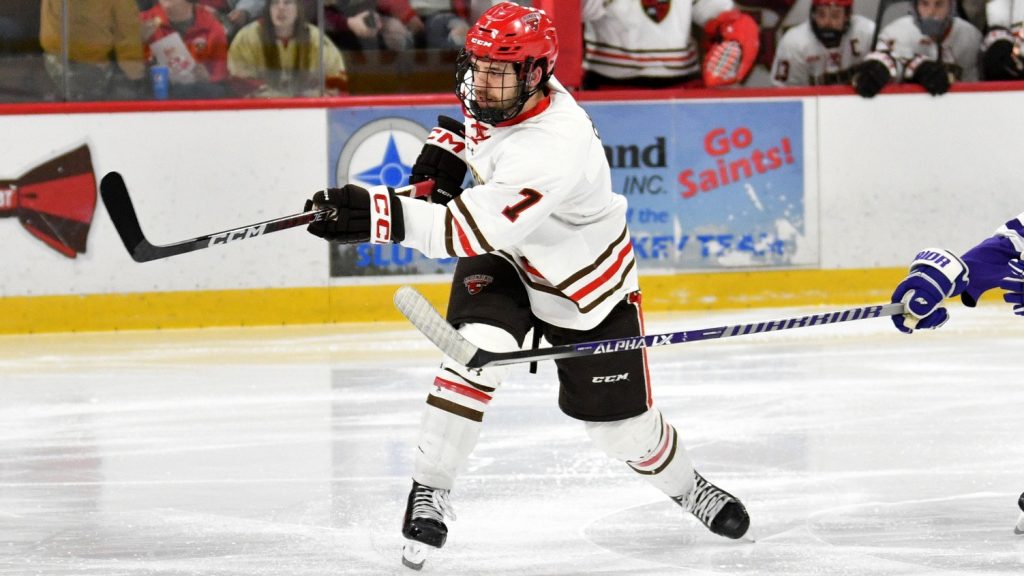
ST. LAWRENCE
HEAD COACH: Brent Brekke, entering his fifth season at St. Lawrence
LAST SEASON: 17-19-0 overall (12-10-0, 37 points, 4th in ECAC)
KEY RETURNING PLAYERS: F Luc Salem (Sr., 10g-17a-27pts); F Ty Naaykens (Jr., 3g-13a-16pts); D Mason Waite (Jr., 3g-13a-16pts); F Jan Lasak (So., 4g-11a-15pts); F Max Dorrington (Sr., 7g-7a-14pts)
KEY LOSSES: F Cameron Buhl (9g-9a-18pts); G Emil Zetterquist (17-19-0, 2.64 GAA, .899 SV%)
KEY ADDITIONS: G Mason Kucenski (Madison Capitols, USHL); F Gunnar Thoreson (Minnesota Wilderness, NAHL); G Cameron Smith (PAL Junior Islanders, NCDC); G Ben Kraws (Tr., Arizona State, DI-Independent)
2023-24 PREDICTION: St. Lawrence is always going to be a factor in ECAC. Brent Brekke is one of the league’s best coaches, and nearly every major contributor except one or two players returned. The roster was deep enough to produce the team was deep enough last year to produce 16 different players with at least three goals, and significant victories down the stretch boosted the Saints into a first-round bye (see also: a 1-0 win at Cornell and the pair of 4-2 wins over Clarkson).
Based on all of that, it’s perfectly reasonable to expect St. Lawrence to earn another top-four spot and battle for a coveted first round bye seed in the ECAC postseason this year, but actually getting to that point should depend on several different factors. Even if the Saints stay exactly the same, the swirling winds around them are going to change, and the fact that they broke into the top four with a worse overall record than fifth-seeded Colgate was more dependent on the new-age mathematics of the modern era.
It didn’t hurt, either, that Clarkson dropped to sixth when it was supposed to contend for a league championship, but beyond debating the merits of a three-point, shootout structure, the fact remains that St. Lawrence did all the right things to gain a top-four spot.
The only question is if it can catch the right lightning in a bottle for a second time. Emil Zetterquist’s departure from playing thousands of minutes for the program created a well-expected hole, but Ben Kraws is a well-traveled goalie that won 12 games for Arizona State in 2021-2022 after starting his career with Miami. His last year of eligibility should help patch the position over until either Mason Kucenski or Camerson Smith, who posted a 2.23 GAA with a .940 save percentage last year in juniors, takes over.
Other than that, SLU is basically back, and Gunnar Thoreson, a former 60-point scorer in juniors, already looks like a logical current or future replacement for Cameron Buhl.
Couple it all with a schedule that’s backloaded with brutal weekends, and it stands to reason that the Saints will march their way right back into the ECAC mix. The fact that their year ends by going Cornell-Colgate on the road, Quinnipiac-Princeton at home, Harvard-Dartmouth on the road, Colgate-Cornell at home, and Princeton-Quinnipiac on the road is enough to maybe knock them down a couple of pegs into the end, though.
PREDICTED FINISH: Sixth
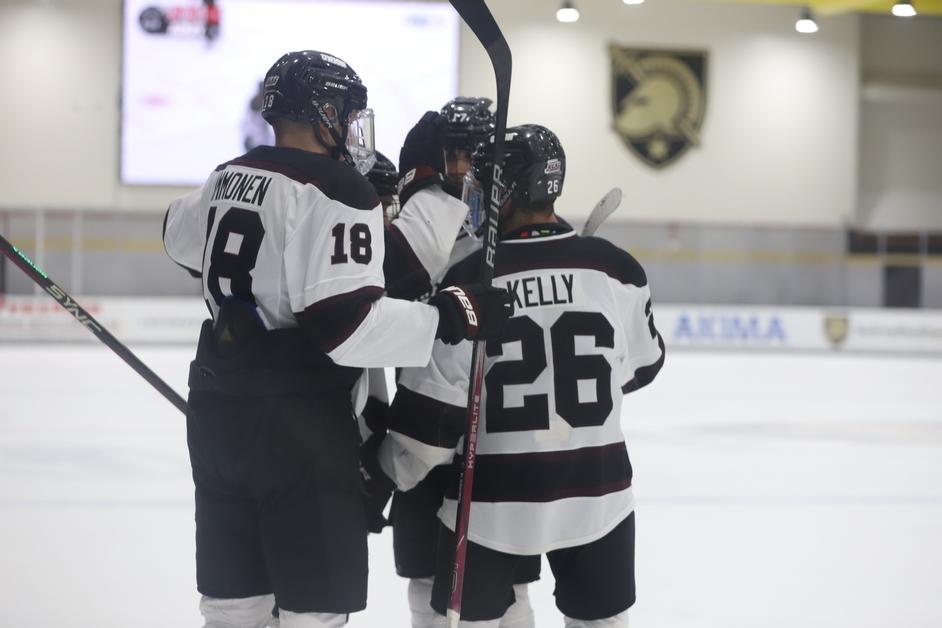
UNION
HEAD COACH: Josh Hauge, entering his second season at Union
LAST SEASON: 14-19-2 overall (8-13-1, 26 points, T-7th in ECAC)
KEY RETURNING PLAYERS: D John Prokop (So., 4g-19a-23pts); F Nate Hanley (So., 5g-16a-21pts); F Tyler Watkins (Sr., 9g-10a-19pts); F Josh Nixon (Jr., 11g-5a-16pts); D Cal Mell (So., 3g-12a-15pts)
KEY LOSSES: G Connor Murphy (12-17-1, 3.34 GAA, .888 SV%)
KEY ADDITIONS: F Eli Pilosof (Pickering Panthers, OJHL); D Joey Potter (Fairbanks Ice Dogs, NAHL); G Aksel Reid (Springfield Jr. Blues, NAHL); F Cole Kodsi (Tr., Bentley University, Atlantic Hockey)
2023-24 PREDICTION: Union is a lot like a rebranded label this year where the newly-named Garnet Chargers are looking for the new look with that same great taste. This is a team that lost virtually nobody from its stat sheet or line chart – Nic Petruolo was the only transfer out of Schenectady that had considerable playing time in the program besides Chris Theodore, who transferred into Union from Atlantic Hockey’s AIC before leaving after his senior season this past year – and a team with its young leadership should at least ruffle some feathers during this year’s hockey season.
Is it enough to gain traction for something more than a first-round home game? That’s hard to tell, and it’s hard to judge much from last year because Josh Hauge was in his first year. Some of the losses might be attributable to growing pains for a young team learning how to gel with one another, so giving the entire program a chance to take a step forward is going to be fun to watch.
The opening game win over Army West Point was a statement, but there will be more to learn about Union when it hosts Connecticut at the end of October. The schedule to start the year is frisky in favor of the Garnet Chargers (almost typed Dutchmen there…sorry, there’s a learning curve for everyone), so there’s no way to count them out until we see what happens in those opening weeks.
PREDICTED FINISH: Eighth
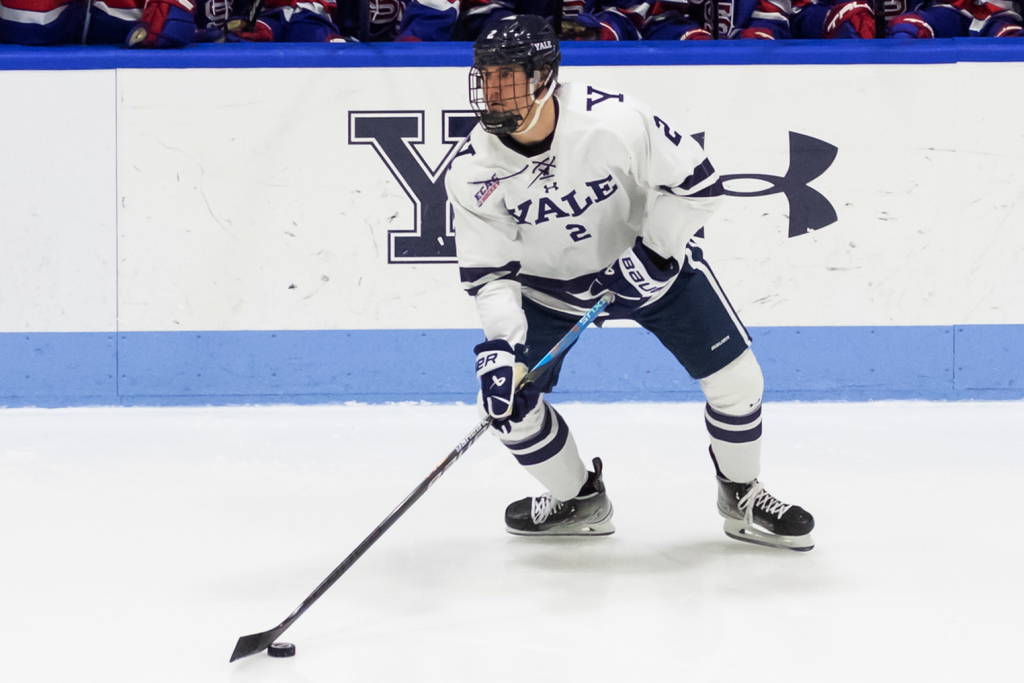
YALE
HEAD COACH: Keith Allain, entering his 18th season at Yale
LAST SEASON: 8-20-4 overall (6-14-2, 22 points, 10th in ECAC)
KEY RETURNING PLAYERS: F Ian Carpentier (Sr., 9g-8a-17pts); F David Chen (So., 8g-7a-15pts); F Briggs Gammill (4g-10a-14pts); F Reilly Connors (Sr., 7g-5a-12pts); D Bayard Hall (So., 2g-4a-6pts); G Luke Pearson (Jr., 5-9-4, 2.42 GAA, .918 SV%); G Nathan Reid (3-7-0, 2.88 GAA, .909 SV%)
KEY LOSSES: F Cole Donhauser (6g-7a-13pts); D Brandon Tabakin (2g-4a-6pts); D Michael Young (0g-5a-5pts); D Ryan Carmichael (2g-0a-2pts)
KEY ADDITIONS: F David Andreychuk (Northeast Generals, NAHL); D Rhys Bentham (Cranbrook Bucks, BCHL); D Owen Forester (Milton Menace, OJHL)
2023-24 PREDICTION: Last year’s season in New Haven can be summarized along a very specific line of demarcation at the holiday break: anything prior to the Christmas-New Year’s Eve timeframe was essentially a loss with five points earned strictly from the first game’s win over Brown and the last game’s shootout win over Clarkson, and anything after the first of the year was a ridiculously competitive team that found its juice after resetting and looking internally at what worked and what failed.
I honestly remember talking to Keith Allain around the time that Yale had the overtime exhibition loss to the United States National Team Development Program. For four-plus games, the Bulldogs hadn’t scored, but they’d internally analyzed what happened by simply going back to the original starting point. It was a very serious inflection point, and from that moment, Yale started playing significantly better by beating Army, tying Merrimack, beating RPI and sweeping a home weekend against Clarkson and St. Lawrence.
Even down the stretch, a 4-0 win over Princeton and a 4-2 win over Colgate wasn’t anything to ignore, and of all those first round matchups, the No. 10 seed walked into Albany and soundly grabbed a 4-1 win before getting swept by Quinnipiac one round later.
An upward trajectory should have Yale in the hunt for home ice advantage, and with the right amount of risers and shakers in the league, the Bulldogs should decisively grab some wins where they’re decidedly overlooked by experts. As is the case with Ivy League schools, the front-loaded conference schedule is a trial-by-fire before a two-game swing out to Denver to play the Pioneers, but the December nonconference schedule against LIU, Merrimack, LIU again, and Boston University should show what Yale has to do to grab its next brass ring.
Nobody should be sleeping on Yale this year, and it looks like the post-COVID rebuild is both balanced and ready to swing into a second gear. Whether or not that allows the team to revisit its top echelon status yet is a debate, but pity the team that sees the Bulldogs slot into their postseason matchup, regardless of location.
PREDICTED FINISH: 10th
